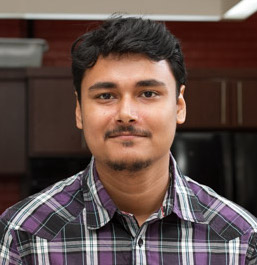 During his fellowship at the College of Engineering, postdoctoral associate Sabyasachi Chatterjee focuses heavily on issues related to the plasticity of metals and alloys. Plasticity, also known as plastic deformation, is the ability of a solid material to undergo an irreversible shape change as a result of applied forces, such as bending metal into a new shape. “I am involved in developing computational methods to understand plastic deformation and strength of Nickel based superalloys and fusion energy materials,” Sabyasachi explains. His intrigue in this lies in understanding the various failure mechanisms in metals and alloys in order to develop structural components with desirable mechanical properties.
During his fellowship at the College of Engineering, postdoctoral associate Sabyasachi Chatterjee focuses heavily on issues related to the plasticity of metals and alloys. Plasticity, also known as plastic deformation, is the ability of a solid material to undergo an irreversible shape change as a result of applied forces, such as bending metal into a new shape. “I am involved in developing computational methods to understand plastic deformation and strength of Nickel based superalloys and fusion energy materials,” Sabyasachi explains. His intrigue in this lies in understanding the various failure mechanisms in metals and alloys in order to develop structural components with desirable mechanical properties.
“Nickel based superalloys are highly suitable for application in gas turbine engine components, automotive parts, gas and oil exploration, metal processing and nuclear industries which face very high thermomechanical stress,” Sabyasachi goes on to say. These superalloys possess improved strength due to the presence of precipitates which make it possible to control and reduce plastic deformation and damage. He and his team have implemented a model of the interaction between dislocations and precipitates in the framework known as the Discrete Dislocation Dynamics (DDD), which is a popular computational method to study the evolution of dislocations in various materials.
As his research progresses, Sabyasachi is looking forward to what is ahead as a postdoc. “I am looking forward to working on fusion energy materials which based on certain defects, could critically affect their thermo-mechanical response,” he says with promise. The goal behind this research is to improve engine efficiency and reduce carbon dioxide emissions.
